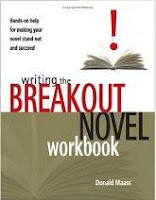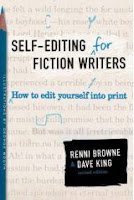Writing Tips & Tools
Wednesday, July 22, 2009
 I know, I know...just the thought of writing a One Sheet can cause most normally sane people to reach for a hammer in a futile attempt to destroy their computers and thus avoid the exercise.
I know, I know...just the thought of writing a One Sheet can cause most normally sane people to reach for a hammer in a futile attempt to destroy their computers and thus avoid the exercise.
LOL...it really ranks right up there with the “dreaded synopsis”...but that’s another post.
A one sheet is basically a full page elevator pitch. Remember learning to do an elevator pitch. It’s the three sentence version of a one sheet that you can tell a captive agent or editor on the way up or down in an elevator. *snort-giggle* (And it doesn’t count if you lean on the buttons to make the elevator keep stopping so that you can read them a whole one sheet.)
The basic anatomy of a One Sheet contains enough information to pique the interest of an agent or editor. It should contain:
Your contact info: name, address, phone number, email and your primary website.
Stop at those and don’t embellish with an info dump including your Twitter, Facebook, or any other social networking connections. If you are word wise and have room left over when you get all the applicable data included you could add any business websites that you are involved in, but don’t forsake novel info for biographical info. You need them to be interested in the book first!
Next...lay out the info for your book.
The spiritual theme – usually there is a bible verse or premise in mind for the book concept.
The length, genre, and availability.
The concept - sometimes called a short synopsis, or back cover blurb – mash down the whole book into a couple sentences. Usually who, what, when , where and why works well...LOL...I got all “w’s” in there!
A short market analysis - why would this book be a good seller, what makes it different or interesting, and/or what group of people would be interested in reading it.
And lastly, a quick comparison to one or two other books that are similar, or written in the same vein.
Here is a sample of the One Sheet that I used to get the interest of my agent, Terry Burns. This particular book has not found a home yet...but nothing comes before its time. One Sheet
Another format for a sort of One Sheet is the type that agents send to publishers called a Sell Sheet. It contains different information that the type that we as writers would hand out because this type is usually followed by a full length proposal (which we will talk about in another lesson.)
This is a sample of a Sell Sheet that my agent sent out on this same novel. The format contains about half author info, and half short synopsis, with a log line at the top. Sell Sheet
All of the words that I have written in bold will be future discussions!
by Bonnie Calhoun
Tuesday, July 14, 2009
Hi all!
I've garnered what I consider to be very helpful information about formatting your manuscript. This info comes from my friend and agent Terry Burns. He is a multi-published novelist, and an agent at Hartline Literary ...LOL...so the man KNOWS what he is talking about!
One large hurdle to publication is submitting a good, professional-looking proposal or manuscript to an agent or editor. The object here is not to stand out but to look like an established pro. A submission that appears the submitter does not know what he or she is doing, or that looks like it will take too much work to get ready may receive little or no attention.
These rules cover the primary items for the formatting of the manuscript, but the submission guidelines posted by the editor or agent you are submitting to should be the guide. While it is true a manuscript might not be rejected for breaking only one of these rules (unless it's a glaring one), a combination is sure to catch attention. We have to prepare a manuscript in some manner anyway, we might as well prepare it right.
Some of the key provisions are:
CHECKLIST FOR FORMATTING A MANUSCRIPT
by Bonnie Calhoun



















